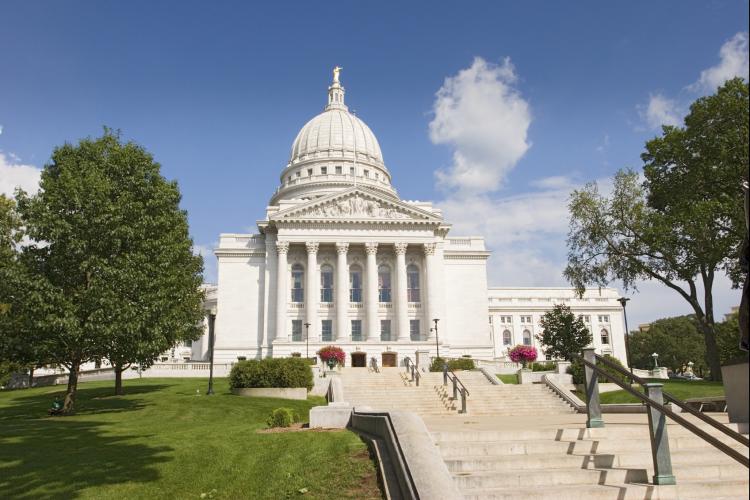
The City of Madison recently became Wisconsin’s first municipality to adopt an energy benchmarking ordinance. Passed in March 2023, the ordinance ensures that large commercial building owners monitor their energy use and take steps to make their buildings perform at optimal levels.
More specifically, the ordinance creates a Building Energy Savings Program (BESP), which includes two requirements. Starting in 2024, non-residential commercial buildings 25,000 square feet and larger will be required to benchmark their energy use annually. And starting in 2025, the largest of these buildings, those over 50,000 square feet, will be required to tune-up their building’s major energy using systems, like lighting and HVAC, every four years. Both portions of the ordinance will be phased in.
What are benchmarking and tune-ups?
Benchmarking, to put it simply, is measuring and tracking a building’s energy use over time. Benchmarking will be completed using ENERGY STAR Portfolio Manager, a free and easy to use web-based tool developed by the U.S. EPA. The goal of benchmarking is to enable building owners and managers to understand energy use patterns, spot any unexpected changes, set energy goals, track progress and identify opportunities to save energy and money. Over time, buildings that consistently benchmark typically reduce their energy use 8-10%, according to research by U.S. EPA.
Like tuning up a car or a bike, building tune-ups check and adjust a building’s existing systems to make sure they are running well and are not unintentionally wasting energy. A tune-up requires some corrective action(s) - operational adjustments, maintenance or minor repairs – if they are needed to make sure the building systems are in a good state of operation. This process must be completed by a professional trained specifically for the type of work required. Tune-ups do not require new systems-- they ensure that existing systems perform at their best. Simply ensuring the HVAC schedule is correct or verifying lighting sensors are working correctly can make a noticeable difference in a building's energy use. Analysis by Pacific Northwest National Laboratory (PNNL) shows that tune-ups reduce energy waste in a building by 12% on average.
The Win-Win-Win of the new ordinance
Madison’s new Building Energy Savings Program will benefit building owners and occupants, as well as the community at large. Buildings with high energy efficiency raise property values, increase occupancy rates and reduce energy bills. For tenants and other customers of these buildings, it means a healthier and more comfortable indoor environment. For Madison residents, the benefits are multifaceted. Less energy consumption and fewer greenhouse gas emissions lead to better outdoor air quality and water quality in the region. The BESP will also provide job opportunities for trained tune-up professionals and tradespeople throughout the building industry.
Additionally, the city is prepared to provide resources to help ensure the BESP is implemented smoothly and successfully. Resources will include education, outreach and support, free trainings on the various aspects of the program and a help desk to ensure building owners and managers have the information they need to benchmark and tune-up their buildings and information on resources such as rebates, incentives and financing.
How it Came to Be
The passing of the BESP ordinance came to fruition after several years of discussion and collaboration with stakeholders, energy consultants and the Madison community. Leading the work to develop the ordinance was Jessica Price, Madison’s Sustainability & Resilience Manager who was appointed by Mayor Rhodes-Conway for the position in 2021. Jessica recently spoke at the U.S. Department of Energy’s 2023 National Energy Codes Conference about the ordinance and what it took to get the ordinance passed. MEEA had the opportunity to discuss the ordinance with Jessica. She had this to say:
“Reducing climate pollution from the building sector is critical for achieving our climate and energy goals in Madison and across the U.S. Madison is committed to reaching 100% renewable energy and net zero carbon emissions community-wide by 2050.
“Right now, about 30% of our emissions come from commercial buildings. These buildings will still be around when we need to meet our 2030 and 2050 goals. Existing buildings are important pieces of the climate action puzzle. Luckily, there are several strategies for improving the efficiency of existing buildings – including benchmarking and tune-ups.
“These no and low-cost actions create big payoffs for commercial building owners, tenants, and our community. In Madison, reducing annual energy use in buildings covered by this program by 10 to 15% would cut carbon emissions by 91,000 tons per year. That’s like taking 18,000 cars off the road.
“And the timing couldn’t be better. The Inflation Reduction Act provides incentives, rebates, and other financial assistance for energy efficiency upgrades in existing commercial and residential buildings. So, building owners can take action on the energy saving projects that benchmark and tune ups help them identify and plan.”
This latest Building Energy Efficiency Program is an exciting step forward for the City of Madison as they make strides towards their ambitious net zero goals. Another recent victory for the city was the Efficiency Navigator Program, allowing eligible multifamily housing to receive free energy saving upgrades. If you would like to read more about Madison’s vision going forward and other accomplishments, please visit their sustainability page on the city’s website. If you would like to see a similar ordinance being passed, check out MEEA’s recent blog post highlighting this other Midwestern city.